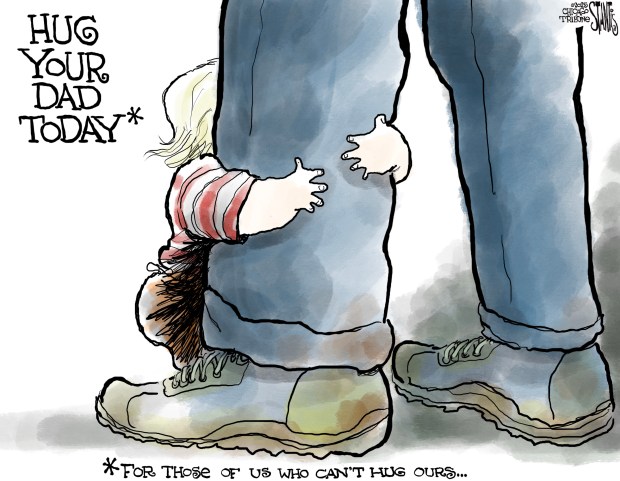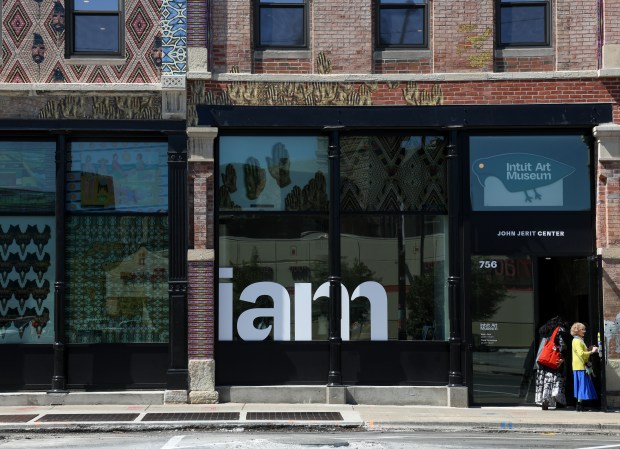Teachers in Chicago and nationwide are “walking in” Monday because Elementary and Secondary School Emergency Relief funds, a lifeline of educational funding created during the pandemic, are expiring.
ESSER funds enabled Chicago to provide essential support to students who needed it: mental health services, tutoring programs and more. The funds, along with the results of our most recent contract, are the reason that Chicago Public Schools is leading other school districts in reading education recovery. Without ESSER funds, we confront the reality that has existed for as long as our school district has — our schools have never been fully funded.
This coming year, our leaders must change that.
Our schools have always been underfunded, because they, like our highways and former public housing, are intertwined with the project of segregation in the city.
In 1863, the Chicago school board mandated separate instruction for Black and white youths. Some 90 years later, Chicago schools Superintendent Benjamin Willis instituted half-day double shifts and later makeshift wagons stationed in parking lots to serve as schools for Black children rather than provide them access to the resources at white schools.
Forty years after that, city leaders set forward a “revolutionary” vision for CPS — to shut them down. Renaissance 2010, whose architect was one-time CPS CEO Arne Duncan, closed schools and opened privately run charter schools. It created the opportunity for people like Juan Rangel, who led a charter school network, to replace beloved community schools with enterprises run outside the accountability of local school councils and government oversight. By 2013, then-Mayor Rahm Emanuel decided to close another 50 schools, 42 of which served a student population that was more than 75% Black. North Side schools frequently have more access to arts programming than their South Side counterparts, and WBEZ reports that only 10% of schools where Black students are the largest percentage of the student body have a librarian.
The impact of these decisions isn’t just test scores and budget items. Anyone can hear both the talent and the pain from artists such as Lil Durk, whose music is a soundtrack to the abandonment of our Black and brown neighborhoods. Our youths refer to their communities as “the trenches” because the battle against disinvestment is a fight against the deprivation and daily struggles they face.
Ask notable individuals Chicago produced such as former professional basketball players Yolanda Griffith and Derrick Rose and even our CPS CEO, Pedro Martinez. They will tell you they are defined by their perseverance to make it despite these struggles. They, and all of Chicago’s youths, deserve careers nurtured by, not made despite, their environment.
No one loses when we invest in arts, sports and literacy for our youths. We’re better as a city if the new arrivals at Nicholson STEM Academy have a classroom where the teacher can speak their language, if the kindergartners at Arthur R. Ashe are not crammed 39 into a room or if the 1 in 5 students with disabilities left with no transportation to class have a bus route that serves them.
Deciding that our schools are OK, as is, is giving into the logic of “good enough” and the ledger balancing that places more resources in upper-middle-class and whiter neighborhoods and deprives Black and Latino ones of them.
Deciding that our schools should be transformed is what elected our mayor, what my union is committed to and the opportunity in front of us at the state level. While it’s about finances, it’s more so about the lives and futures we are shaping.
It’s also not rocket science. There are models for us across the country. Gov. JB Pritzker has the opportunity to address these issues head-on the same way other governors have. Gov. Gavin Newsom figured out how to commit billions more to education in California. Maryland Gov. Wes Moore championed reforms centering equity and access. Gov. Tim Walz decided to make Minnesota the best state in the country for kids. Just last year, he increased again the state’s investment in schools, and it got him a vice presidential nomination.
Pritzker is exactly the right person to end the underfunding and make a historic turn in Illinois’ commitment to education. After the murder of George Floyd, he passed sweeping police reforms. Through the pandemic, he steered Illinois with thoughtful leadership. He has helped raise the minimum wage, expand health care and rebuild our local economies. Now, he must apply that same spirit of leadership and collaboration to the education sector that badly needs it and that has never been given its due.
On the first day of school this year, I met a mother in Pullman who, in response to CPS cutting her bus service, got a second job to be able to buy a car and drive her child to school herself. Her determination highlights what single Black mothers in Chicago do when they have no choice but to figure it out. She didn’t give up. Neither can we.
Today, our union will not budge on a transformative contract and agenda for full funding that turns the page and puts our students, teachers and community first.
Bruce Rauner as governor left behind a wreck. CPS has been perpetually underfunded since its inception. But these are challenges to take on, and wrongs to right, not excuses to avoid the problems we face.
ESSER funds demonstrated what can be accomplished when schools have the resources they need. The rest of CPS’ history is an example of what occurs when those resources are denied.
With the funds expiring, we should build on the success they made possible. The alternative is returning to a culture that sees underfunding and inequity as “good enough.” That is exactly what our city and state can no longer afford.
Stacy Davis Gates is president of the Chicago Teachers Union.
Submit a letter, of no more than 400 words, to the editor here or email letters@chicagotribune.com.




